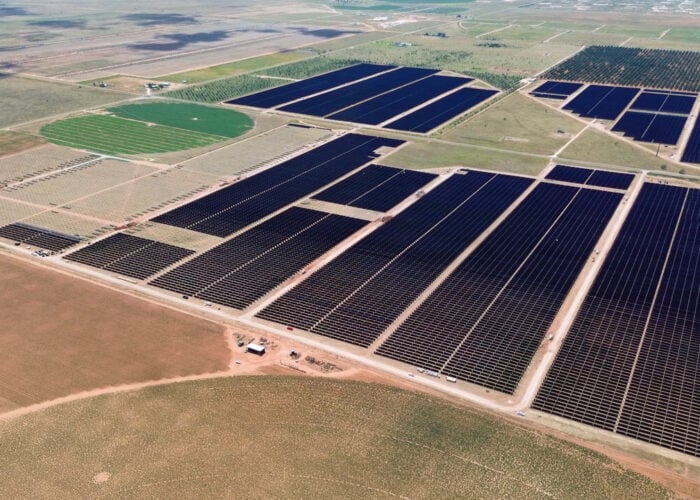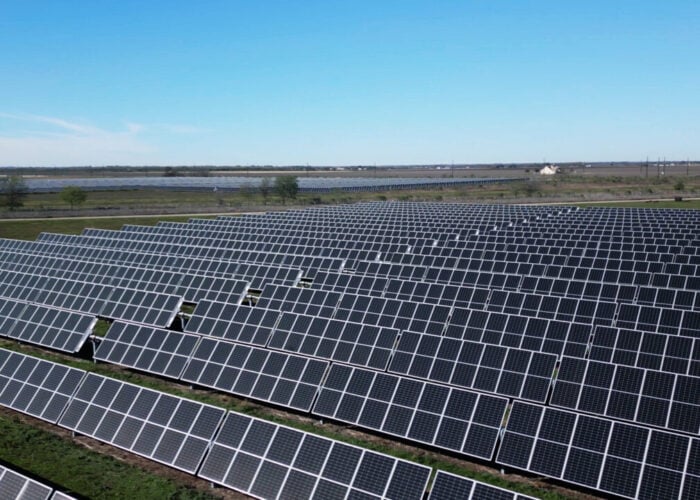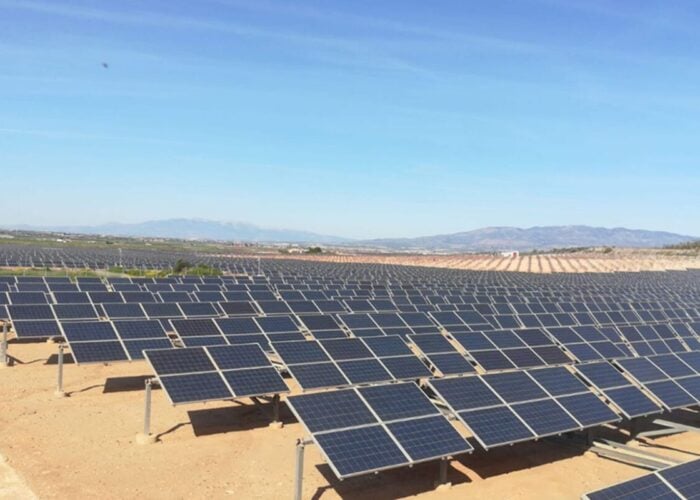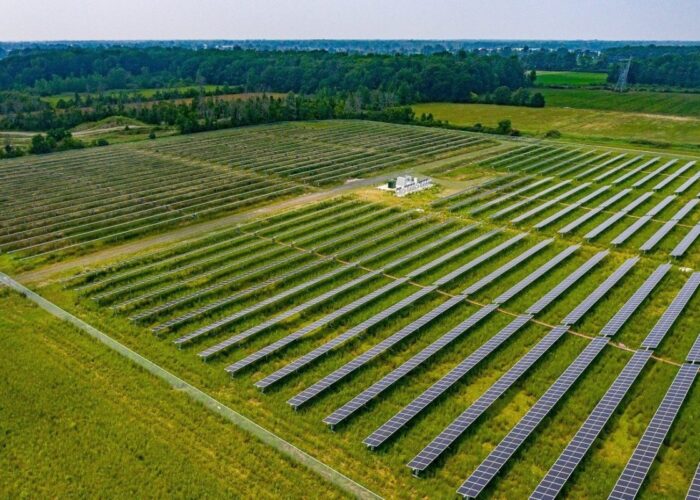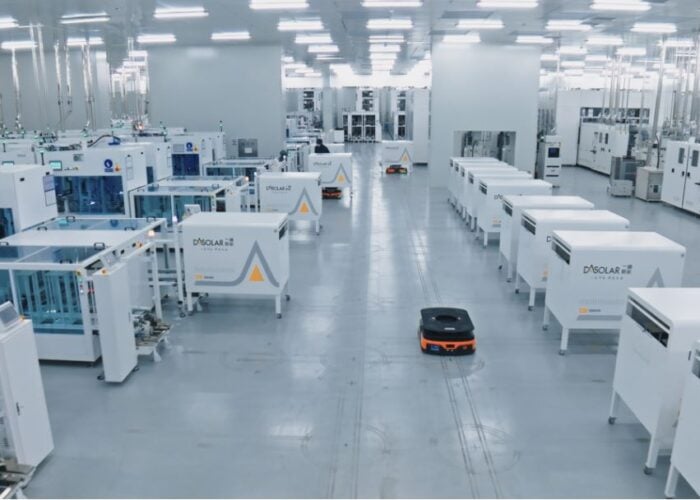The director of the US Department of Energy’s (DoE) solar cost cutting programme has hailed the “phenomenal jobs growth rate” that the US solar industry has enjoyed in recent times.
Minh Le, director of the Sunshot Initiative, spoke to PV Tech as Sunshot prepared to launch a number of funding opportunities designed to assist the industry in bringing ideas and innovations forward to commercialisation and into economies of scale.
Try Premium for just $1
- Full premium access for the first month at only $1
- Converts to an annual rate after 30 days unless cancelled
- Cancel anytime during the trial period
Premium Benefits
- Expert industry analysis and interviews
- Digital access to PV Tech Power journal
- Exclusive event discounts
Or get the full Premium subscription right away
Or continue reading this article for free
Le said figures from November which showed the number of people employed by the US solar industry had grown by 21.8% in a year, meaning almost one in 80 new jobs in the US went to someone in the solar industry, were “really exciting to see” and “very impressive”.
“…About 31,000 new jobs were created in 2014 alone, with it anticipated to grow further in 2015 to grow the industry to approx 210,000 jobs across America. This is phenomenal jobs growth rate. That means about 1 in 78 new jobs in America was actually a solar job in 2014,” he said.
Le added that in part this achievement was down to price declines for PV systems both at the hardware and “soft costs” level for businesses of varying sizes. Soft costs including permitting and other “red tape” and in some parts of the US can be more than 50% of an install's cost – particularly for the residential sector. The Sunshot Initiative directed by Le has in place a target to make solar cost competitive with other forms of energy.
According to Le, the programme has now advanced to 70% of its target, with Le and his colleague Dr Lidijia Sekaric speaking to PV Tech to publicise a the launch of US$45 million in funding for solar hardware technologies at three stages of advancement – from incubating prototype production, to piloting and developing manufacturing lines. Sunshot is also launching its first ever funding for shared ownership community solar projects worth US$15 million and a programme for reliability and durability of systems.
Lidijia Sekaric told PV Tech that the US$45 million of funding wraps up three existing programmes into one solicitation. Sunshot Incubator assists in development of prototypes, the SolarMat manufacturing technology strand, which assists pilot production and SunPath, which helps enable “a commercially relevant product to be manufactured at globally best-in-class costs when scaled”.
“These are not new programmes, they are a repeat of our previous commitment to annually sustained innovation across the whole value chain by helping private enterprises – a lot of the innovation and execution is happening in the private sector,” Sekaric said.
“…We do span literally the entire value chain, literally everything that could drive down the cost of solar.”
Sekaric said that targeted funding of the money, split across a number of participants and with several tiers of awards, although relatively small in the context of a rapidly growing billion-dollar industry, could have the desired effect. She said there were two aspects to the way this could work successfully, the first being that strategic investment to boost a gap in a company’s required capital to develop a product could give them the freedom to successfully take their product forward.
“The second one is through our active project management, we in fact can get projects to succeed. We take great care and responsibility in negotiating and structuring both commercial and technical milestones and try to help the company’s activities and in some of the cases their strategies might change.
“…So it may be a little bit of money in the grand scheme of things but we think it is well spent, both because we pay attention how to [best] spend [the money] and try to find the differentiating characteristics of where they can use the grant that does give them quite a bit of freedom in the innovation stakes,” Sekaric said.
According to Sekaric, the companies that receive awards would be required to share knowledge and data to ensure the value of the investment was felt across the entire US. Minh Le agreed, and said that in related areas such as energy storage, as well as in PV itself, targeted funding could have tangible success and said the proof would be seen in the programme’s results.
“I think that the greatest success that we have here is when we have the innovation that we help support with federal tax dollars, if the companies actually make products that will be solutions in the marketplace for consumers and businesses, that’s the real testament to success. It takes businesses to sell products that will create the solutions in order to have the large impact on society,” Le said.
Also in the US, president Barack Obama appeared to throw solar and especially large-scale solar a lifeline when he requested recently the extension of the Investment Tax Credit (ITC) in his 2016 budget. The ITC had been due to expire, with many in the industry hoping to see it extended. Obama's budget request still requires approval, meaning the survival of the ITC, which can provide tax credits worth up to around 30% of a solar system's cost, still hangs in the balance. It was recently reported that in 2014, the US installed 3.13GW of solar in total.
Through Sunshot, the Department of Energy is also offering funding opportunities for energy storage paired with solar. Le said it was becoming an increasingly important subject to look at for the electricity networks of the future.
“…All the electric grids of today were designed in a very different era with one-way power flow in mind. With distributed generation we’re seeing two-way power flow and that is the revolution if you will that is brought on by technology not dissimilar to how everyone used to get news in the old days with newspapers or telegraphs, now we’re looking at a paradigm shifting transition,” Le said.
“…Central power generation is certainly a very important part of tomorrow’s grid but generation and storage [also] will be important to that.”
Back on the subject of centralised funding, interestingly, Vincent Bes, chief of Photowatt recently told a PV manufacturing and research conference that European solar RnD needs a “systemic shock” to survive. Bes suggested merging “all the research centres in Europe” to pool knowledge and resources, and for the European industry to remain collectively competitive.

